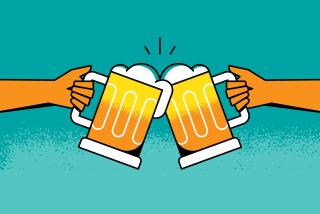Op-Ed: In defense of Mexican rodeo
On Sunday, thousands of charros (Mexican cowboys) and their fans will gather in the Mexican city of Queretaro for the final rounds of the 71st annual National Charro Competition. CharrerĂa (Mexican rodeo), not soccer, is Mexicoâs national sport, and the competition is as popular as the Super Bowl or NBA finals. Mexican officials, dignitaries and celebrities will attend. So will several hundred charros from the United States, who have emerged victorious after a yearâs worth of competitions in California, Texas, Illinois, Oklahoma and other states. In the U.S., the event is unlikely to register, but the American public should pay closer attention: Mexican rodeo is a contentious issue bound up with the immigration debate.
In the last two decades, animal welfare activists in the United States have persuaded legislators to ban certain Mexican rodeo events. Most laws focus on the manganas, in which the front legs of a galloping horse are lassoed to bring it safely to the ground in a shoulder roll. Historically, the practice was used on the open range to capture a horse that needed medical attention or branding. Now that the manganas are performed in urban areas and only for sport, activists say they are unnecessarily cruel and must be stopped. Legislators have generally agreed. More than a dozen states have considered âhorse trippingâ bills, and most have passed. These laws impose stiff penalties: up to six months in jail, up to $1,000 in fines and, in some cases, a felony conviction.
Whatâs especially worrisome is that legislative attacks on Mexican rodeo have provided fodder for anti-immigrant hysteria.
I sympathize with the activists. Several years ago, when I began researching Mexican rodeo in the U.S., I attended my first charreada in Southern California. The first few events were much like American-style rodeos I had attended as a child, but one event, the piales â in which the rider throws a lariat, lets the horse run through the loop and catches it by the hind legs â made me squirm in my seat. As I looked around at the other people in the stands, though, I realized that none of them were having that visceral reaction. Some were watching intently to see how the event would unfold, but most werenât paying attention at all. Instead, like spectators at any sporting event, they were chatting with their friends, eating, drinking and texting.
My reaction, I understood, was a matter of cultural conditioning. Each of us, as members of a given culture, learns that certain ways of treating and relating to animals are normal and that other ways of working with animals are not just different but inferior. When a particular group holds most of the political power in a society, as English-speaking white Americans do in the U.S., the laws enacted to regulate animal practices will reflect their biases. Laws banning the manganas are no exception.
Granted, some activists have voiced legitimate animal welfare concerns, but charros have addressed these concerns. Right after the first law was passed in California in 1994, charros from across the nation agreed to change how they do the manganas: Instead of bringing the horse to the ground, they let the rope slacken and allow the horse to run free. Itâs been against the rules to âtripâ a horse for more than 20 years, and the Charros Federation USA imposes penalties for those who violate the policy. But this reform hasnât stopped other states from contemplating legislation, forcing charros â most of whom are working-class men with families â to travel across the country defending themselves against something they arenât even doing.
Itâs hard not to interpret the laws as a form of ethnic prejudice when they make explicit exemptions for nearly identical events in the American-style rodeo. In Arizona, exemptions were made for âcalf or steer roping events, bulldogging or steer wrestling events or any other traditional Western rodeo events, including barrel racing, bareback or saddled bronc riding.â In Nevada, lobbyists succeeded in stalling a horse-tripping bill for several years by reminding legislators of the industryâs enormous effect on the stateâs economy. A law banning the manganas did eventually pass there, but with a loophole allowing local governments to issue permits for American-style âhorse roping.â
At a more basic level, American rodeo is seen as representing U.S. history and values in a way that charrerĂa does not, even though they have linked histories and are remarkably similar in their treatment of animals.
Setting aside the obvious hypocrisy here, whatâs especially worrisome is that legislative attacks on Mexican rodeo have provided fodder for anti-immigrant hysteria. Supporters of the laws have implied that charros abuse children and launder drug-smuggling money. They have demanded a border wall, English-only laws and mass deportations of Mexican immigrants. In some cases, they have argued that anyone who participates should be violently assaulted.
Mexican rodeo is not the only sport in the United States that endangers animals, but charros have been singled out because they are an easy target and lack political influence. Given what is at stake, animal welfare activists and their legislative allies need to be far more careful in balancing their concerns for animals with equal concern for immigrants and their families.
Laura Barraclough is an assistant professor of American studies at Yale University.
Follow the Opinion section on Twitter @latimesopinion and Facebook
More to Read
A cure for the common opinion
Get thought-provoking perspectives with our weekly newsletter.
You may occasionally receive promotional content from the Los Angeles Times.










